The Tale of the Heike is a classical Japanese epic detailing a war fought for control of the country near the end of the 12th century. It has received dozens of translations, is taught in schools across Japan, and is so foundational to the nation’s literary canon that it draws frequent comparisons to Homer’s Iliad. I am woefully unequipped to write about an adaptation of such a vital work, but Heike Monogatari deserves to be covered nonetheless, because it’s had one of the strongest starts I can imagine an anime having in 2021. My posts on the series will be brief and (assuming it continues to operate at this level) largely appreciative of its excellence, not essential companions for those seeking a fuller understanding of its adaptational choices. I’m just a guy with a cinematography boner and a few Wikipedia articles about the Heian period under his belt – if you’re okay with that, hit the jump and let’s talk about what makes this show so special.
“What” is probably the wrong word, actually, so let’s start with “who.” A lot of talented people are to thank for Heike Monogatari’s outstanding looks (many of them background artists, since their rendering of Heian-kyo has been lovely thus far), but director Naoko Yamada’s guidance of the series’ visual ambitions is the big story here. Her style has been on display since the opening scene of episode one, where a simulated light leak briefly stained the frame red to foreshadow a character’s bloody demise. Yamada loves to replicate these sorts of cinematic artifacts with digital tools, which has carried over to this new project – bloom lighting, extreme depth of field, and tasteful use of chromatic aberration have all made appearances in these two episodes. That last practice’s use in closeups on main character Biwa’s right eye has been highly effective, lending an eerie distortion to her predictive powers. Other Yamada tendencies are present as well, such as her penchant for pushing characters to the edge of the frame (and yes, her fixation on feet), so despite this show being her first foray outside Kyoto Animation, it’s easily identifiable as part of her filmography.
Where Naoko Yamada goes, writer Reiko Yoshida tends to follow (or perhaps it’s the other way around), and such was the case for Heike Monogatari as well. I don’t know which of these two women first had the idea to add a young female protagonist to a male-dominated military epic, but it’ll be Yoshida’s job to weave her into a story that will only get bloodier from here. I quite like the execution so far – Biwa’s prophetic talent and proficiency with a lute (the instrument for which she’s named) make her an easy sell as the priestess who will eventually record and perform the Tale of the Heike, at least in this adaptation. After just two episodes, though, she’s just a traumatized girl at the mercy of the clan responsible for her father’s murder. Resistant though she may be, her new guardian Shigemori’s primary purpose in adopting her is to use her power to avert the death of the Taira clan, and I doubt he’ll abandon that dream so easily. Still, Biwa’s late father strictly forbade her from using her right eye, and given the horrors it’s already shown her (especially in the fragmented premonitions we saw right after her dad’s death), she won’t bow to Shigemori so easily, either.
As far as deuteragonists go, Shigemori is a good one, thoughtfully-written from the outset. His history as a capable warrior precedes him, but he’s also a kind and conscientious man. He loves his family, but he’s also loyal to recently abdicated Emperor Go-Shirakawa, whose tensions with Shigemori’s father are numerous and intertwined. So deep is his political loyalty, in fact, that he sends his second son away from home after the boy unintentionally disrespects one of the former Emperor’s men. That’s just one of a handful of measures he takes to atone for his son’s breach of etiquette, leading Go-Shirakawa to comment that he’s “cleaning up the shit thoroughly.” One might think Shigemori a timid man in light of such placations, and the show leans into that view when his father and stepmother tease him for hanging 48 lanterns at his estate to battle his fear of the dark. Truthfully, though, his fear comes from his ability to see the ghosts of his still-living clansmen, and it’s his desire to prevent their deaths that motivates everything he does. Only Biwa can truly understand this, being spiritually sensitive herself, so the bond between them is tightly constructed from a narrative point of view.
Yamada and Yoshida’s collaborations have always centered on female characters, and though women had little agency in Japan’s Heian period, the two managed to mine tremendous drama from the circumstances of a bride-to-be and a pair of shirabyoshi (high class dancers who dressed as men) in episode 2. The bride is Tokuko, Shigemori’s younger sister, who has been promised to Go-Shirakawa’s son in what was clearly a strategic agreement between two patriarchs. Tokuko accepts her duty with dignity in public, but privately she laments her fate to Biwa, who she views as a sort of substitute for her younger sister, who was also married off for political reasons. The juxtaposition of Tokuko’s inward and outward selves is striking, especially in the shot of her lying on a raised tatami mat, critiquing her scheming father from a lounged position. The premiere introduced her as a consummate lady to whose presence Biwa was immediately drawn, so to hear such regret in her voice must have crushed the poor girl. On top of all this, Biwa has experienced repeated visions of Tokuko drowning, with a pair of whirlpools set to claim her life at some point in the future. The episode-ending premonition seemed to indicate that she would die on the way to her new residence, but that’s merely my interpretation – either way, Biwa’s tortured scream during the final seconds bodes poorly for the older girl’s survival.
Just one more paragraph before I re-rewatch these episodes, then, about the two shirabyoshi I mentioned above. Both women entertained Kiyomori (Shigemori and Tokuko’s father, and thus the head of the Taira clan) and likely served as his courtesans, but at different points – Gio, who we saw performing at a celebration in episode 1, was his initial muse, before she was replaced by Hotoke-Gozen in the follow-up. Though Gio was spurned by her lover, she was forced to act as Hotoke’s companion after the latter woman became lonely – if she refused, she would more than likely have been put to death, along with her family. As with Tokuko’s story, Gio lived out her new role with all due grace, but internally she suffered from the shame and heartache of being dismissed from her position so abruptly. That she became a nun to escape Kiyomori’s service wasn’t particularly surprising to me, but what came next certainly was – Biwa used her right eye to see that Hotoke would follow the same path to remain at Gio’s side. This was the most beautiful moment in an episode full of them: a veiled figure traversing a verdant forest, the simple bamboo trees representing the purity of one who had cast off worldly desires, and the moment where Hotoke humbly revealed herself to the woman with whom she had once competed. Incredible stuff – can’t wait for next week!


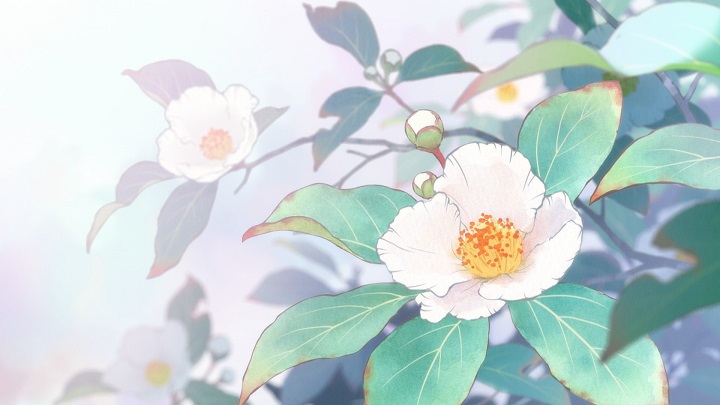
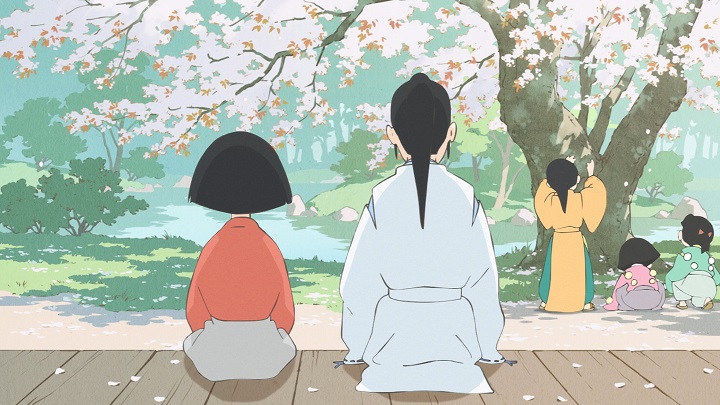
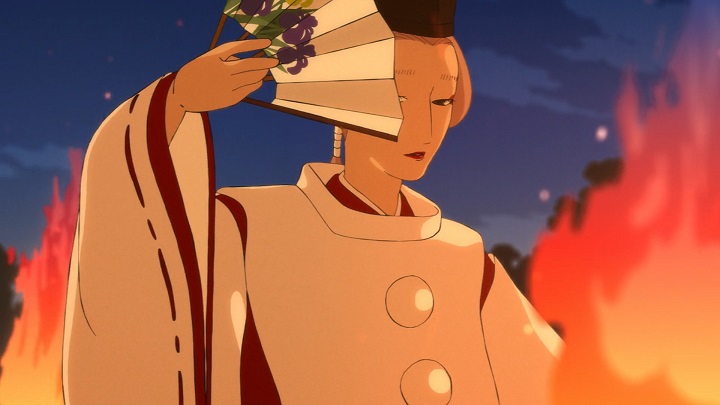
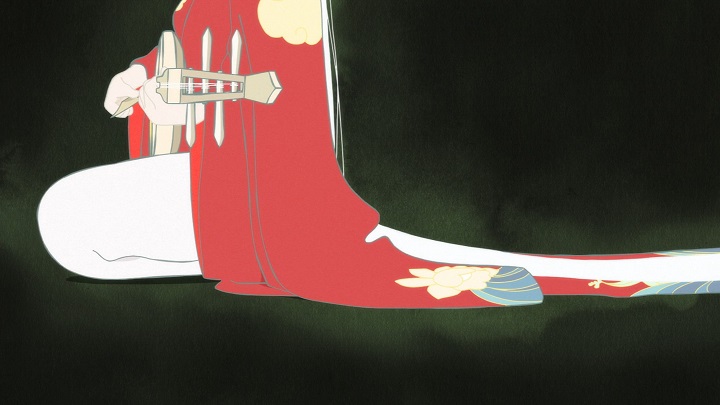
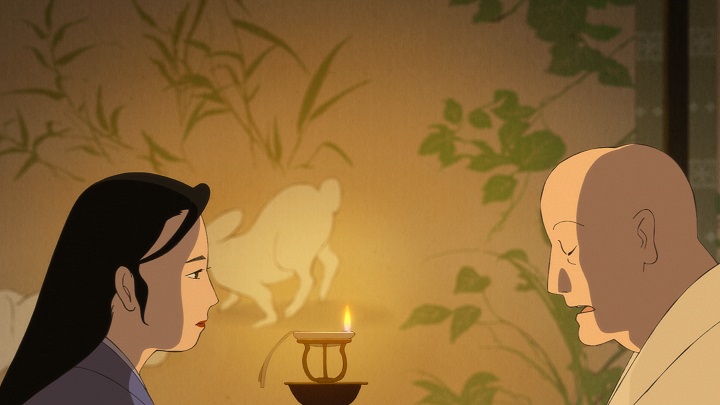
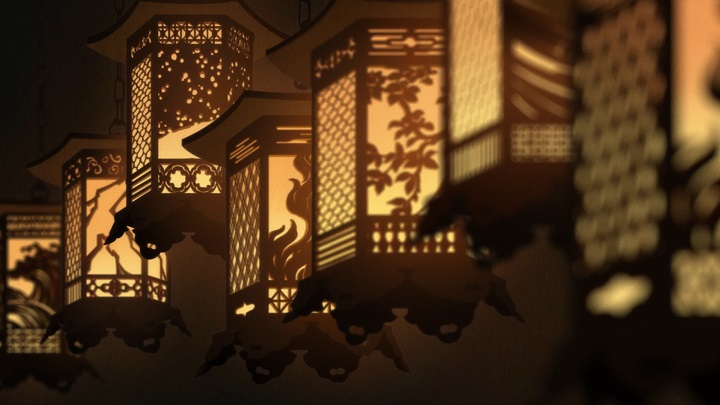
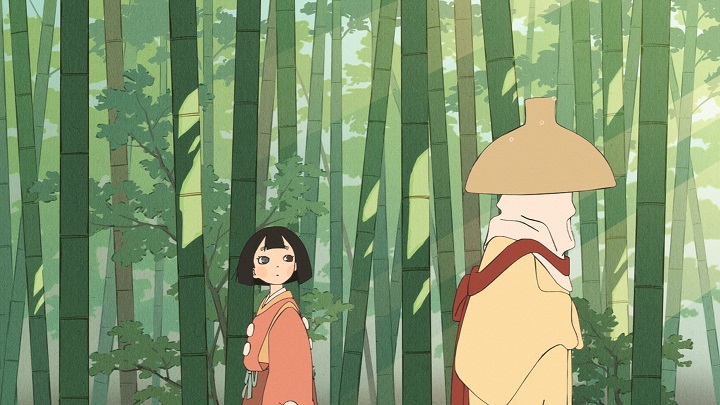
Awww yeah! So glad to see this one getting covered! I pretty much know nothing about the Tale of the Heike other than a few passing lessons on it in a college class, but I fell in love with this show right away. I admit it is hard to follow at times, and the way it just drops names and events without much in the way of context is a little hard for me to swallow, being autistic and all, but everything else about this absolutely makes up for it. I absolutely cannot wait to watch more! Also, so surprised that Aoi Yuki can do such a brusque, boyish, bratty voice. I’m so used to her doing sweet young girls with cute voices (Madoka from Madoka Magica and Nodoka from Healin Good Precure), but love that she has range to back her talent up.
Glad to have you as a reader! I’ll be doing my darndest to post each week, because I feel this show is something truly special. It’s so good, in fact, that I relish the opportunity to screencap those names and events and google them after my viewings. Yamada has just 11 episodes to work with here, so I don’t want the series to explain itself any more than necessary – I’m happy to do my homework after each episode airs.
Great in-depth review! I’m also not that familiar with the original story, but I love the way this series is going so far!
Thanks! Glad folks are watching this gem, especially since its unorthodox premiere date might have pushed it off people’s radars.
I’m actually curious how much of this show will cover the Heike story or if it will instead focus on the lives of the women left behind/behind the scenes of the Heike story. Sort of using it as a backdrop for the lives of the women rather than being the main story. It’s the sort of thing Yamada would do I think.
Whatever the case I hope she keeps it up. The last time I enjoyed a Yamada work was awhile ago but I got K-On out of the experience.
It’ll probably be a mix. The seeds have already been planted for a plot about Biwa’s biological mother, so we’ll get more female focus in the future. But episode 2 also had a lot of dialogue about the warrior monks of Enryakuji, who are crucial to the early chapters of the actual Tale of the Heike, so they’re setting up the more literary aspects as well.
Heard the reception to episode 2 was mixed to say the least, largely due to the large amounts of exposition dumping present that kinda put a damper after the stellar premiere. Seems like you’re still feeling optimistic about this one.